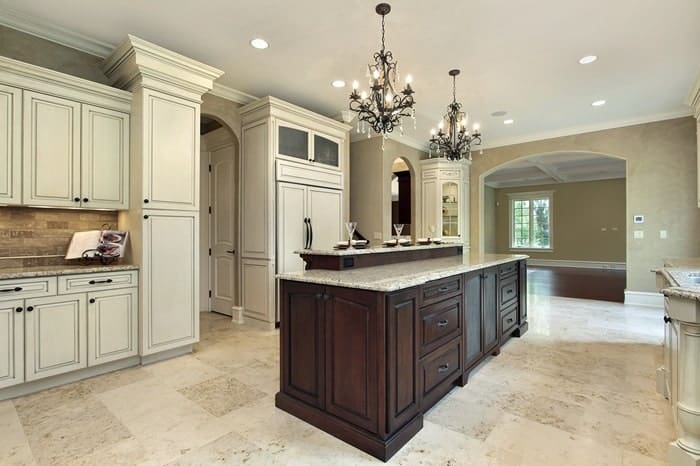Choosing the right tiles for your home is more than just a matter of aesthetics; it’s a decision that affects the durability, maintenance, and overall ambiance of your living space. With a myriad of options available in the market, ranging from ceramic and porcelain to natural stone and glass, selecting the perfect tiles can seem like a daunting task. This guide aims to simplify the process by providing you with comprehensive insights into the different types of tiles, their benefits, and the best applications for each. Whether you’re remodeling your bathroom, kitchen, or flooring, our ultimate guide will help you make an informed decision that aligns with your home’s style and your personal preferences.
Understanding Tile Materials
Tiles come in a variety of materials, each offering unique attributes and aesthetic appeal. Ceramic and porcelain tiles are incredibly popular due to their durability and range of designs. Ceramic tiles are made from clay and are perfect for areas that do not see heavy foot traffic, like walls or low-traffic rooms. Porcelain tiles, on the other hand, are more suited for high-traffic areas and outdoor use due to their high density and resistance to moisture.
Natural stone tiles, such as marble, granite, limestone, and slate, add a luxurious and timeless appeal to any space. Each piece is unique, providing a distinctive pattern that can’t be duplicated. However, it’s important to note that natural stone requires more maintenance to preserve its beauty, including regular sealing and cleaning with suitable products. When it comes to tiling a backsplash or creating an accent wall, glass tiles are an excellent option. They come in a wide range of colors and finishes, offering a sleek and modern look to any room.
Deciding on Tile Size and Shape
The size and shape of tiles can significantly impact the visual perception of a space. Large format tiles can make a small room appear larger and are easier to maintain with fewer grout lines. They are an excellent choice for floors and walls in modern homes. Smaller tiles, including mosaic tiles, offer more grout lines, which can add slip resistance but might require more upkeep.
Shapes range from the traditional square and rectangle to more intricate options like hexagons and chevrons. These unique shapes can create dynamic patterns and accents in a room, ideal for backsplashes, bathroom walls, or decorative borders.
Choosing the Right Color and Pattern
Color and pattern play a crucial role in setting the tone and atmosphere of a room. Light-colored tiles can make a small space appear larger and brighter, while dark tiles can add depth and warmth. Patterned tiles can add personality and flair to any space, making it unique. When selecting a pattern, consider the overall decor and color scheme of the room to ensure cohesion.
It’s also worth considering the long-term aspect of your choice. Neutral colors and classic patterns tend to have a timeless appeal, while bold and trendy patterns might not age as well. Think about whether you’re choosing for immediate impact or long-standing satisfaction.
Grout Selection
Grout is not just a functional element to fill the spaces between tiles; it’s also a design choice that can accentuate or soften the overall look of your tiled area. Light grout can create a seamless look, ideal for making the room appear larger, while dark grout can highlight the pattern and shape of the tiles, adding visual interest.
The type of grout you choose, sanded or unsanded, also depends on the width of the grout lines and the type of tile. For example, unsanded grout is typically used for narrow grout lines and delicate tiles like glass to prevent scratching.
Maintenance and Care
Maintaining your tiles will ensure they remain beautiful and durable over the years. Ceramic and porcelain tiles are low maintenance, requiring only regular cleaning with non-abrasive cleaners. Natural stone tiles, however, need more care, such as sealing to prevent stains and damage from acidic substances.

In high-traffic areas or rooms like the bathroom and kitchen, choosing tiles that are easy to clean and resistant to moisture will save you time and effort in the long run. Regularly checking and updating grout can also prevent moisture damage and keep your tiles looking new. It’s worth considering the maintenance and care required for each type of tile before making your final decision.
Choosing the right tiles for your home is a balance between aesthetics, functionality, and long-term maintenance. By understanding the different materials, sizes, patterns, grout options, and maintenance needs of various tiles, you can make an informed choice that reflects your personal style while complementing your home’s design. With this ultimate guide, you’re equipped to embark on the journey of selecting the perfect tiles for your living space. It’s time to turn your home into a beautiful, durable, and functional masterpiece.



























